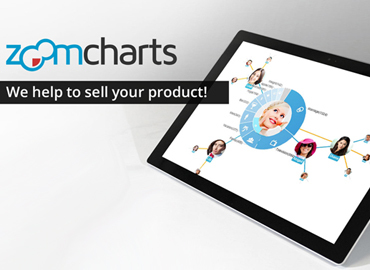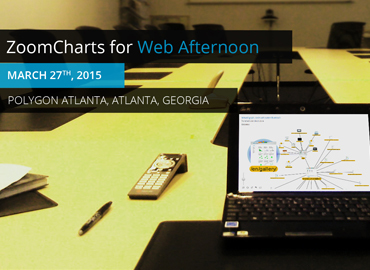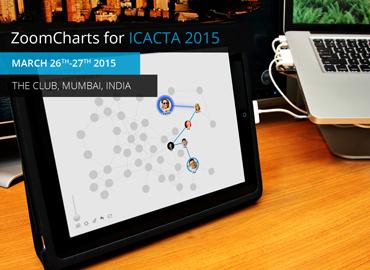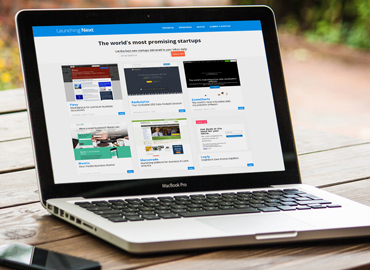Visualization is to data what color is to television – both allow to rediscover something we knew in a whole new light. With data universe rapidly expanding, people are eager to know what insights it holds. With data visualization software developers can step up and deliver this knowledge.
Thanks to the mushrooming of mobile devices and software, the world is now in over its head in data. We are overwhelmed by non-stop streams of data of different variety and relevancy. The tasks now are to, first, figure out how to make sense of all this data and, second, decide how to use the data in a way that improves our decision making and quality of life.
The
EMC 2014 Digital Universe study revealed that the digital universe is expected to grow from 4.4 to 44 zettabytes in 2020. According to this research, 44 zettabytes of memory is equivalent to 6.6 stacks of 128 GB iPad Airs from the Earth to the Moon. That said, not all of the data gets analyzed – in fact, only a fraction of big data is useful. And only a fraction of that fraction – just about 1% - actually gets analyzed. Makes you wonder what’s buried in the rest of the 99%, doesn’t it?
Software developers are uniquely positioned to distill the big data and put the relevant information in the hands of consumers and enterprises. Data visualization happens to be one of the most effective ways for doing that.
The non-stop software market
With software already commanding virtually every aspect of our day-to-day lives, internet of things growing and virtual reality taking off, software developers find themselves right in the center of all the action. Just like the iPad stacks to the Moon, work keeps piling up.
The numbers back it up – in 2016 the global enterprise software spending is expected to grow by
5.3% amounting to $326 billion, while the app industry is expected to bring in revenue of
$ 51 billion, surpassing the music industry on the way. Indeed, there isn’t just an app for anything, there are several apps for everything. Applause Analytics at the end of 2015 estimated that there are around
1.5 million apps for iOS and 1.8 million for Android. Obviously, there’s a tough competition in the app market. Can data visualization provide the much needed edge?
Why data visualization matters
The same Applause Analytics report revealed that usability and performance are the most valued attributes among application users. It is easy to see how data visualization can make or break the usability of an application that deals with data and information. It’s not just the how easy data vizualisation is on the eye, it’s also about delivering interaction, consistent performance on all multi-touch device, speed and the ability to work with live data streams.
However, it is not just about delivering top-notch data visualization in apps. Developers can also use data visualization to improve software development process itself. From testing to customer service delivery –
ZoomCharts javascript charts and graphs can help demonstrate patterns, relationships and correlations that otherwise would remain hidden.
The challenges of data visualization
Software developers are juggling several things at once when developing software that translate big data into relevant and useful products. They have to deliver consistent experience for users as they move around and switch from device to device. They have to track user behavior and link data from multiple sources. They have to maintain application security that requires ability to detect threats in real-time.
Having to create data visualization from scratch on top of all that would be a daunting task for several reasons.
- Firstly, these days algorithmic programming skills are hard to come by - they are short in supply and in high demand. By opting to use ZoomCharts generous javascript charts library, you’ll halfway there already.
- Secondly, even if you find your programming wiz, creating decent data visualization can be costly and time consuming. Using ZoomCharts will allow you to move along quicker and save those valuable resources.
- Thirdly, creating data visualization is one thing - creating data vizualisation that can wrangle real time big data, provide visual layering and work with different devices is a whole other ballgame – one that ZoomCharts has mastered.
ZoomCharts is proud to have created an innovative javascript charts library that can help software developers build new data-driven applications.
Why ZoomCharts is the right fit for software developers
ZoomCharts offers software developers world’s most interactive data visualization that can bring to life any relationship, correlation and insight. Consider these benefits of using ZoomCharts for your software development.
- ZoomCharts is free for developers. ZoomCharts javascript charts and graph library can be accessed for free while the application is being developed and tested – upgrades included, and with no time limit. Developers are required to purchase the license when the application is deployed in production environment.
- ZoomCharts is pure javascript and HTML5. ZoomCharts can be used with any database and any programming language (including .NET, PHP, Java, Ruby etc.). With minimal amount of code, you’ll be able to deliver outstanding data visualization in your application.
- ZoomCharts has rich API library that allows for easy integration and thousands of customization options.
ZoomCharts HTML5 charts and graphs library will enrich your applications and provide interactivity that allows users not just passively observe data but actively engage with it.
The bottom line
Don’t hesitate to check out the industry page specially dedicated to software development and find out more about all the
ZoomCharts features available for developers. ZoomCharts was created to bring data exploration to a new level. We are certain that our interactive javascript graphs and charts will help you and your users reveal the big picture of the mega-, giga-, terrabytes of data and zoom in on the details making the “search for the devil” both enlightening and delightful.









